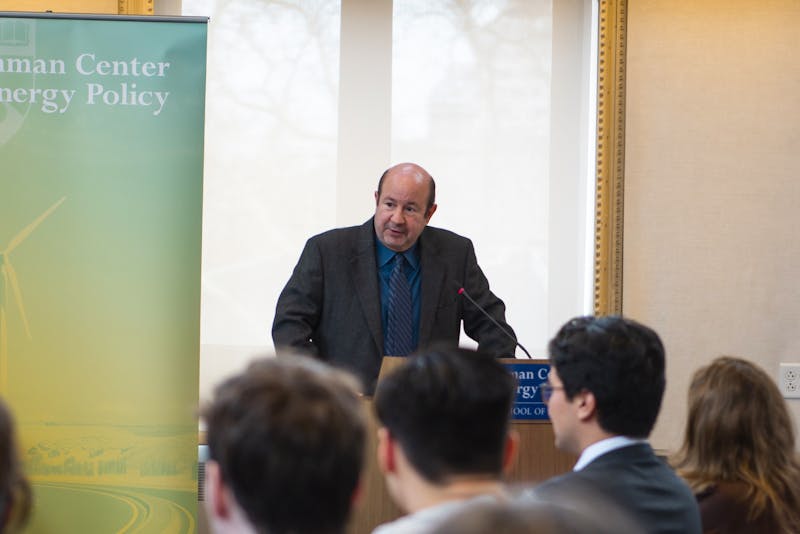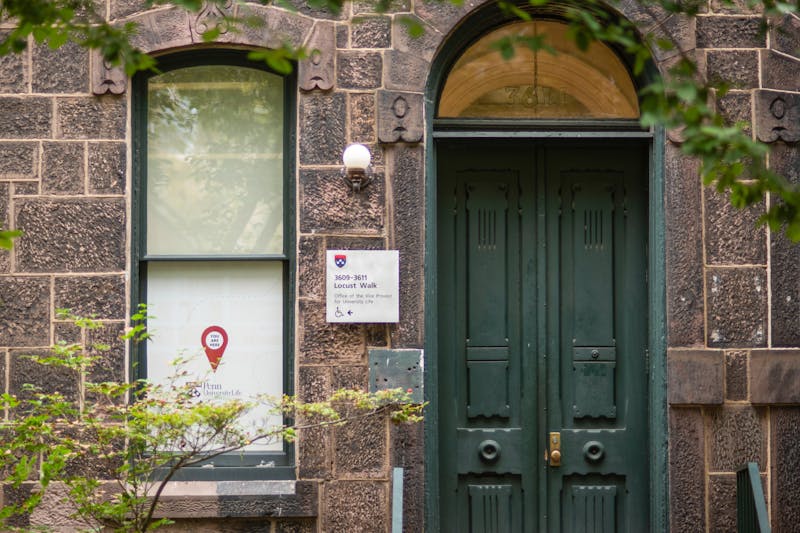
With Hamilton College House set to be named in honor of Judith Rodin, all of Penn's former presidents within the last 30 years are now honored by a prominent tribute on campus.
In fact, with the exception of Sheldon Hackney, they all find their names on buildings.
As each president's term draws to a close, the University Board of Trustees proposes ways of honoring him or her through something of prominence and permanence.
Both the establishment of a professorship and the renaming of a building can act as "permanent tributes" to former presidents, said Mark Lloyd, director of the University Archives and Records Center.
The trustees chose to create the Sheldon and Lucy Hackney Professorship in History to honor Hackney, who is currently a History professor at Penn.
Jim Riepe, chairman of the Board of Trustees, said that the trustees chose to create a professorship rather than name a building after Hackney because endowing professorships was the main capital campaign during Hackney's tenure.
The high-priority goal, which took up seven years of Hackney's 12-year tenure, aimed to create 100 endowed professorships.
As Rodin and others do not have professorships created in their name, this form of tribute is equal in its significance to naming buildings, Secretary of the University Leslie Kruhly said.
The Board of Trustees announced the renaming of Hamilton College House to Rodin College House last week in honor of Rodin's 10-year tenure.
The trustees chose to rename a college house after her since Rodin played an integral role in implementing the College House system as it exists today.
Hamilton was chosen specifically because it was the first high rise in Superblock to be renovated during Rodin's term.
The process of deciding how to honor Rodin's presidency began soon after her resignation was announced.
However, there is inevitably some time lapse between the initial proposal and the actual decision, Kruhly said. Part of the delay in Rodin's case happened because the trustees wished to involve University President Amy Gutmann in the process, she added.
In this instance, the name change honors Rodin's specific accomplishments. This is, however, not always the case.
Buildings renamed to honor former presidents often are "historical coincidences," Lloyd said.
"Typically, buildings are not renamed," he said. Instead, former presidents tend to lend their name to buildings constructed at about the time of their retirement.
For example, Penn's first president, Thomas Gates, is the namesake of the Gates Building in the Hospital of University of Pennsylvania because the building was the most prominent new structure being constructed on campus in 1948.
Similarly, the McClelland Lounge in the Quad was named after the second president, George McClelland, because it was a high-profile meeting place built at the time.
The trustees also named Harnwell College House after Gaylord Harnwell when he retired in 1970 because the high rises were under construction.
"That was probably the most prominent building they could find at that time," Lloyd said.
The specific building chosen is not directly connected to Harnwell, but the former president was responsible for many of the infrastructures that can be found on campus today, including the high rises.
But there are also exceptions to the trend. Like Rodin, former President Martin Meyerson became the namesake of Meyerson Hall because of accomplishments associated with his actual career.
The Graduate School of Fine Arts building was renamed Meyerson Hall in 1983 to honor the former president, who was a faculty member in the School of Fine Arts and played a role in establishing the building that now houses the department's programs.
In these two cases, existing, rather than newly constructed, buildings were renamed to honor a former president.
Even though Hamilton College House was already named after "an 18th-century alumnus who was chosen because he had a historical association with West Philadelphia," it was considered a "relatively weak association" that could be changed, Lloyd said.
Lloyd added, however, that the remaining high rise, Harrison, is unlikely to be renamed since the building's namesake was a substantial donor to the Superblock constructions.
It is also considered a "strong association" when the building is named after a person who is still living, Lloyd said.
The Daily Pennsylvanian is an independent, student-run newspaper. Please consider making a donation to support the coverage that shapes the University. Your generosity ensures a future of strong journalism at Penn.
DonatePlease note All comments are eligible for publication in The Daily Pennsylvanian.







